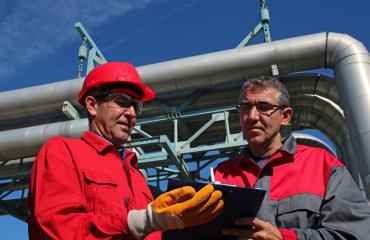
By Dena Lythgoe
Mining is one of the toughest industries in Alaska with some of the toughest Alaskans running and operating these endeavors. With over 4,500 direct mining jobs in Alaska and 9,000 total direct and indirect jobs attributed to the Alaska mining industry it is surprising to know the majority of the operating mines in Alaska are considered small. There are countless small placer mines throughout Alaska with few employees and seasonal operations and no matter how large or small, there are always risks associated with operations.
The initial process for a startup mine is primarily related to exploration which in some instances may not be that much different when compared to placer mining from a risk standpoint. The exploration phase can consist of operating equipment and commercial autos, hauling fuel and hiring employees. The size of the operation will determine the amount of risk that can be financed through insurance in order to provide adequate protection. Below you can review simply worded insurance descriptions based upon standard risk exposures that can be associated with operating a mine.
- General Liability: this coverage provides protection for the policy holder against third party property damage and bodily injury. This is the policy that will defend your actions should a third party (not an employee or volunteer) become injured due to your business operations. A standard commercial general liability policy should have no less than $1,000,000 per occurrence.
- Commercial Auto: a commercial auto policy is different when compared to a personal auto policy. Typically, the limits are higher and the policy is set up to include multiple drivers which are listed on the policy. For proper protection the business should own or be included on the title of registration. The limits recommended for a commercial auto policy should be no less than $1,000,000.
- Workers Compensation: mandated by state law, each operation that has employees must have a workers’ compensation policy providing protection for the employee for work related injuries. Workers compensation also has protection for the employer. Should the employer knowingly have the employee perform an unsafe operation, the employees’ family has the ability to file suit against the employer. The Employers’ liability portion of the policy will provide defense for the employer. The limits for this coverage can be as low as $100,000 for employers’ liability. For a minimal increase in premium the limits can and should be increased to $1,000,000
- Inland Marine: every mine has heavy equipment used to extract natural resources from the ground. Don’t let the name of the policy confuse you. Inland marine is property insurance for property in transit over land i.e. backhoe, loader, scraper, dozer, etc… The inland marine coverage is for the physical damage of the property. Vandalism, theft, and collision are all covered types of losses associated with the majority of inland marine policies. If you have a bank holder lien on your property (equipment) the bank will require physical damage coverage for the property and the inland marine policy is where you will find this coverage. This is an optional coverage as it is a property coverage for your equipment. Varying risk factors associated with each business will help make a determination if coverage should be purchased.
- Pollution: where do you get the fuel for your seasonal operations? If you have on site storage for fuel a pollution policy may be something to consider. If a spill of fuel or any non-native contaminates occur to the site, a pollution policy can be in place to provide protection. Be prepared to fill out information associated with the types of fuel containers and safety procedures associated with the fueling operations as well as operations associated with the maintenance of equipment on site.
- Property: a property policy will provide coverage for property listed at a specific location. This policy protects items such as buildings and can be extended to business personal property including coverage for tools within a certain distance to the covered location/building. Depending on the location of the building certain coverages may be limited. For instance, a building without any fire protection equipment may be very expensive, if coverage can even be provided. Should this policy be something of interest make sure to contact your broker and advise the safety features that are in place to avoid the risk of loss.
- Umbrella/ Excess: this policy is an extension of limits over the underlying policy. For instance, an underlying general liability policy has limits of $1,000,000 per occurrence and a loss occurs of $1,500,000. The standard underlying policy will only pay up to $1,000,000 and no additional coverage would be provided unless an umbrella policy was also in place. The additional $500,000 would then be applied to the Umbrella policy which would provide additional limits of coverage. Umbrella or Excess policies cannot extend property limits therefore it is imperative the limits on property insurance are fully insured to the correct insurable value.
Above are the most common and basic coverages for the many types of businesses including mining operations. As with any industry, there are variations to risks. A small placer mine would potentially have less catastrophic exposure than an underground mine that also has blasting operations. The operation descriptions provided to your insurance broker will help determine the type of coverage, stability of operations and risk associated to the operation. All insurance carriers want to know what they are insuring and the more information provided regarding the operations the higher the likelihood the business will have adequate protection.
Risks associated with hard rock, drilling, blasting and underground mining have specific risks that have specific coverages. Some of the policies associated with the ‘riskier’ exposures can be expensive, minimum premiums of an individual policy can be $5,000 or higher annually. In order to keep cost down the insurance carriers want to know types of loss control in place such as training, continued education, safety meetings and occurrence of safety meetings, length of blasting experience and education associated with mining. It is advised prior to beginning any physical operations each business owner speak with an insurance professional and educate themselves on the types of risk as well as the types of policies and associated costs. With each policy provided there could be limitations and/or coverage enhancements that could provide additional protection.




